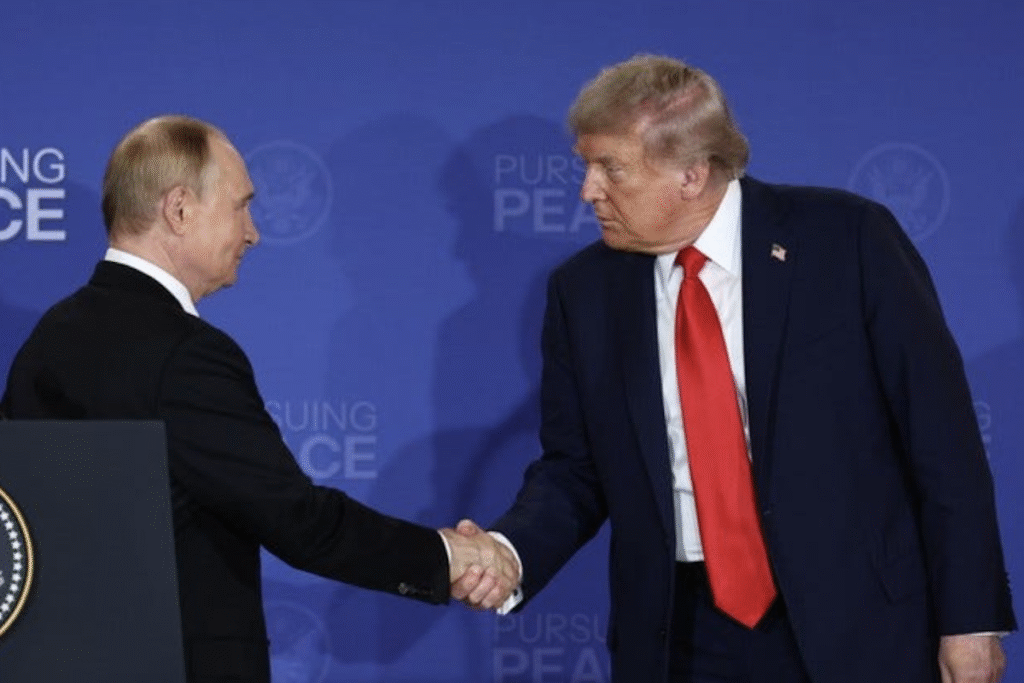The recent diplomatic maneuvering between Washington and Moscow over Ukraine provides a textbook example of how American foreign policy elites continue to confuse grand gestures with strategic coherence.
The March ceasefire proposals, Donald Trump’s phone diplomacy with Putin and the subsequent shifts in negotiating positions reveal not diplomatic sophistication but the persistent American tendency to treat complex geopolitical conflicts as problems that can be solved through the right combination of pressure and inducements.
Limits of presidential diplomacy
President Trump’s recent summit with Vladimir Putin in Alaska, which produced “great progress” but no concrete agreement, exemplifies the fundamental misunderstanding that has plagued American policy toward Russia since the end of the Cold War.
The notion that personal relationships between leaders can transcend deep structural conflicts reflects a peculiarly American faith in the transformative power of individual agency over geopolitical realities.
Trump’s apparent abandonment of ceasefire demands in favor of acknowledging that “Putin wants land” suggests a belated recognition of what realists have long understood: territorial disputes rooted in security concerns and historical grievances cannot be wished away through diplomatic theater.
Yet even this modest nod to reality comes wrapped in the familiar American assumption that the right combination of carrots and sticks can ultimately bend adversaries to Washington’s will.
The Ukraine paradox
The Ukrainian conflict presents American policymakers with an uncomfortable truth: the United States has neither the vital interests nor the capabilities necessary to definitively resolve this dispute on terms favorable to Kyiv.
The discussion of “security guarantees” and “massive purchases of American” military equipment reflects the Washington establishment’s preferred solution to international crises – throw money and weapons at the problem while avoiding the hard strategic choices that effective statecraft requires.
This approach satisfies multiple constituencies – defense contractors benefit from arms sales, foreign policy elites can point to American “leadership” and domestic audiences can feel good about supporting the underdog against aggression.
What it fails to do is address the underlying strategic reality: Russia views Ukraine’s alignment with the West as an existential threat to its security, while the United States lacks both the will and the means to guarantee Ukraine’s territorial integrity against a determined Russia.
Illusion of indispensability
The “high-stakes meeting” involving European leaders, Trump, Volodymyr Zelensky and NATO’s chief represents the institutionalized American belief that no international problem can be resolved without Washington’s central role.
This assumption of indispensability not only inflates American responsibilities beyond sustainable limits but also relieves other actors of the burden of developing their own solutions to regional conflicts.
The reality is that the Ukraine crisis is fundamentally a European security problem that Europeans have largely chosen to outsource to American leadership. This arrangement has allowed European allies to avoid the difficult strategic choices and resource commitments that genuine burden-sharing would require while enabling American elites to maintain the illusion that global leadership enhances rather than constrains American power.
Toward strategic restraint
A genuinely realist approach to the Ukraine crisis would begin with honest acknowledgment of American limitations rather than grandiose promises of support.
The United States has legitimate interests in preventing the crisis from escalating into a broader European war and in maintaining stable relationships with both Russia and its European allies. It has no compelling interest in determining the precise configuration of Ukraine’s borders or government.
The Ukrainian delegation’s “readiness to accept the US proposal to enact an immediate, interim 30-day ceasefire” suggests that even Kiev recognizes the need for pragmatic accommodation with military realities.
Yet American policy continues to oscillate between maximalist rhetoric about Ukrainian sovereignty and ad hoc diplomatic initiatives that fail to address the conflict’s underlying dynamics.
Price of overextension
The diplomatic scrambling over Ukraine reflects a broader pathology in American grand strategy: the tendency to treat every international dispute as a test of American credibility that requires decisive intervention.
This approach has consistently produced outcomes that serve neither American interests nor regional stability, from Iraq and Libya to Afghanistan and now potentially Ukraine.
The alternative is not isolationism but strategic selectivity – the recognition that American power, however substantial, is finite and must be husbanded for genuinely vital interests.
In the case of Ukraine, this would mean accepting a negotiated settlement that reflects the military balance of forces rather than the preferences of Washington policymakers.
The current diplomatic dance between Washington and Moscow will likely continue until the participants acknowledge what military realities have already determined: Ukraine’s future lies in some form of accommodation with Russian security concerns, not in the indefinite prolongation of a conflict that serves neither Ukrainian nor American interests.
The sooner American policymakers accept this reality, the sooner genuine diplomacy can begin.
Leon Hadar is a senior fellow at the Foreign Policy Research Institute and contributing editor at The American Conservative. He is the author of “Quagmire: America in the Middle East” and “Sandstorm: Policy Failure in the Middle East.”

